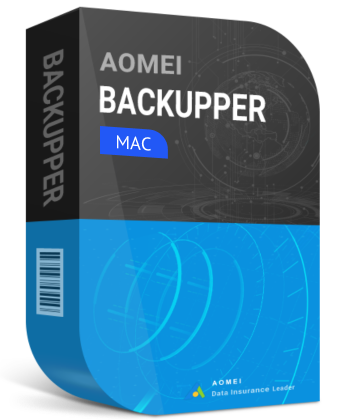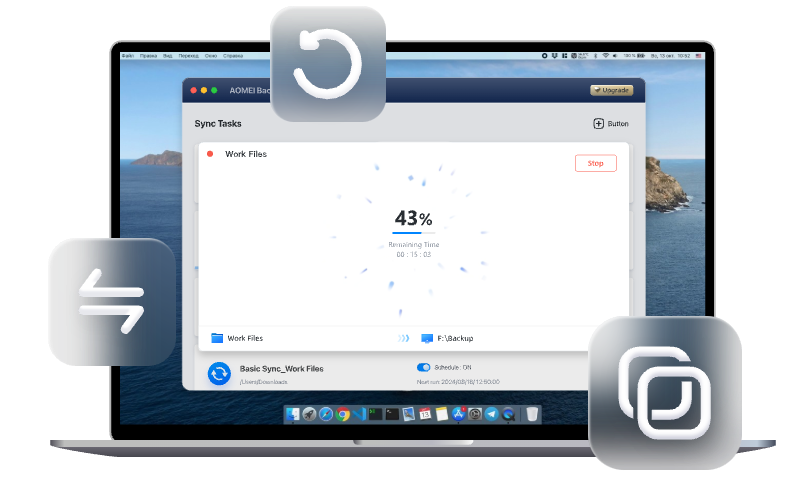Drive Sync Mac: Easily Sync Mac Folders with Google Drive
If you want to use Google Backup and Sync for Mac to sync your Mac folders, read this article to get a comprehensive guide. You can also get solutions to the Google Drive not syncing problem.
Why use Google Drive to sync Mac folders?
As an integral part of Google Workspace (formerly G Suite), Google Drive offers both individual and business users a reliable and scalable platform for managing digital content, allowing users to store, synchronize, and share files across various devices.
Syncing Mac folders with Google Drive is beneficial in the following situations:
- Accessibility: With Google Drive, your files are accessible from any device with an internet connection. This makes it easy to work from different locations or share files with others.
- Backup: Syncing folders to Google Drive ensures your files are backed up in the cloud. This protects your data from local hardware failures, theft, or loss.
- Collaboration: Google Drive offers robust collaboration features. Multiple users can access, edit, and comment on documents simultaneously, making it easier to work on projects with a team.
- Version History: Google Drive keeps a version history of your files. If you make a mistake or need to revert to a previous version, you can easily do so.
- Storage Management: Google Drive provides ample storage options. You can choose a plan that fits your storage needs, whether you have a small amount of data or require extensive space.
How to set up Google Backup and Sync for Mac
To sync files between your Mac and Google Drive, you need to make use of the GDrive app for Mac - Drive for desktop. Follow the instructions below to set up Drive for desktop.
If you want to sync Mac files to other locations such as external hard drive and NAS device, try the best free Mac sync software.
1. Download and install Google Drive app for Mac. Then, log in to your Google Drive.
Note: Drive for desktop supports macOS Catalina 10.15.7 and up. However, users of macOS 10.15.7 no longer receive updates on their app from June 1, 2024.
2. Run Drive for desktop. Then click Google Drive icon in the menu bar, hit the Settings icon and choose Preferences.
3. At the My Mac section, click Add folder to select the folder you want to sync to Google Drive. Then choose Sync with Google Drive and click Done > Save to begin file synchronization.
4. At the Google Drive section, you can choose the way to sync files from Google Drive to your Mac: Stream files or Mirror files. Finally, confirm your settings and click Save. It may require a restart to make the changes take effect.
Notes:
◑ Each Google Account includes 15 GB of storage, which is shared across Gmail, Google Drive, and Google Photos. You may purchase more storage as necessary.
◑ After setting up Drive for desktop on your Mac, a folder named My Drive is created in Finder. You can access your synced files here. Any changes made in this folder will be automatically synced to Google Drive.
Troubleshoot: Google Drive not syncing on Mac
If Google Drive is not syncing on Mac, there are several troubleshooting steps you can take to resolve the issue:
1. Check Internet Connection
Ensure that your Mac is connected to the internet. Google Drive requires an active internet connection to sync files.
2. Restart Drive for desktop
Click on the Drive for desktop icon in the menu bar, hit the Settings icon and choose Quit. Then open the Applications folder, find Drive for desktop, and launch it again.
3. Check Google Drive Status
Visit the Google Workspace Status Dashboard to see if there are any ongoing issues with Google Drive or related services.
4. Verify Account Permissions
- Google Account Sign-In: Ensure you are signed in with the correct Google account that has permissions to access and sync files.
- Verify Sync Settings: Open Drive for desktop preferences. Check the My Mac section and ensure the correct folders are selected.
5. Restart Your Mac
Sometimes, a simple restart can resolve syncing issues by refreshing system processes.
6. Check Disk Space
Ensure your Mac has sufficient disk space available for Google Drive to operate and sync files.
7. Firewall and Security Software
Check your Mac’s firewall settings to ensure that Drive for desktop has necessary permissions to access the internet.
Bonus: Best free way to sync Mac folders
If you want to backup your Mac files, you can sync important files to different locations, not only cloud drives. Free Mac file sync software – AOMEI Backupper Mac can give you a hand.

-
It is embedded with three sync types: Basic Sync, Mirror Sync and Two-Way Sync, catering to your different needs.
-
You are able to sync Mac files and folders to a local disk, USB flash drive, network location and NAS device, etc.
-
To keep files up-to-date in the sync destination, you can run automatic folder sync on Mac with the Schedule feature.
-
It runs smoothly on macOS 14/13/12/11/10.15.
Don’t hesitate to download AOMEI Backupper Mac and try it out! To sync Mac folders using AOMEI Backupper, click New Task in the main interface. Then, choose sync type > select sync source/destination. Finally, click Sync to run the task.
Wrapping things up
Syncing your Mac folders with Google Drive offers numerous benefits, including seamless access across devices, enhanced collaboration, and efficient file management. You can follow the stepwise guide on this page to perform Google Drive sync on Mac.
However, the Google Drive not syncing issue happens sometimes. To add an extra protection layer for your crucial data, you may sync Mac files to different locations with AOMEI Backupper. It offers all-around sync features and is easy to use. Why not give it a shot?

